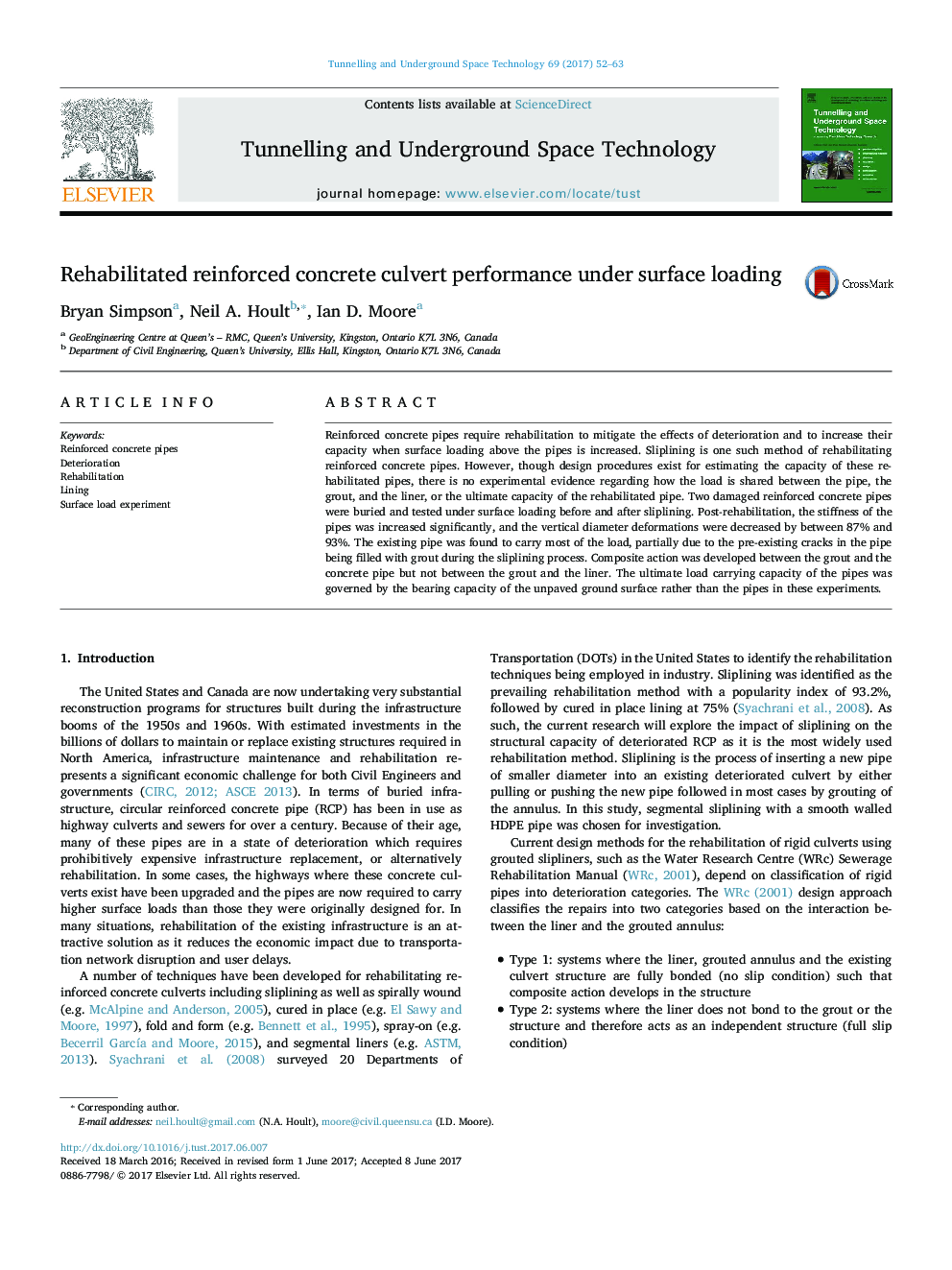| Article ID | Journal | Published Year | Pages | File Type |
|---|---|---|---|---|
| 4929281 | Tunnelling and Underground Space Technology | 2017 | 12 Pages |
Abstract
Reinforced concrete pipes require rehabilitation to mitigate the effects of deterioration and to increase their capacity when surface loading above the pipes is increased. Sliplining is one such method of rehabilitating reinforced concrete pipes. However, though design procedures exist for estimating the capacity of these rehabilitated pipes, there is no experimental evidence regarding how the load is shared between the pipe, the grout, and the liner, or the ultimate capacity of the rehabilitated pipe. Two damaged reinforced concrete pipes were buried and tested under surface loading before and after sliplining. Post-rehabilitation, the stiffness of the pipes was increased significantly, and the vertical diameter deformations were decreased by between 87% and 93%. The existing pipe was found to carry most of the load, partially due to the pre-existing cracks in the pipe being filled with grout during the sliplining process. Composite action was developed between the grout and the concrete pipe but not between the grout and the liner. The ultimate load carrying capacity of the pipes was governed by the bearing capacity of the unpaved ground surface rather than the pipes in these experiments.
Keywords
Related Topics
Physical Sciences and Engineering
Earth and Planetary Sciences
Geotechnical Engineering and Engineering Geology
Authors
Bryan Simpson, Neil A. Hoult, Ian D. Moore,
